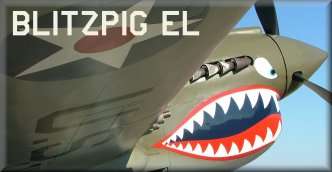
 |
|
#31
|
|||
|
|||
|
Funny, Luthier... I'd always heard that that was a kitchen sink (but that doesn't quite look like a sink).
Neither was I... |
|
#32
|
|||
|
|||
|
i cant wait to see the F-86 Sabre and the F9F Panther!! get some Mig alley action going
|
|
#33
|
||||
|
||||
|
Interesting thing about the Skyraider is that when it was retired from service during the Viet Nam war, there was no single aircraft in the Navy inventory that could do all the things a "SPAD" could.
It was a decision based more on logistical concerns that any lack of performance in the combat arena.
__________________
 Personally speaking, the P-40 could contend on an equal footing with all the types of Messerschmitts, almost to the end of 1943. ~Nikolay Gerasimovitch Golodnikov |
|
#34
|
|||
|
|||
|
Actually a Skyraider scored a kill against a Mig 17 in Viet Nam, if I recall correctly.
__________________
4H_V-man The 2nd Horseman |
|
#35
|
|||
|
|||
|
Praying here for a flyable A-26. That would be a dream come true!
|
|
#36
|
|||
|
|||
|
That pic gives a whole new meaning to the Idea of carrying a S**t load of ordinance. |
|
#37
|
|||
|
|||
|
The sheer number of bombs makes me very excited (giddy perhaps) for the future of simulated air to ground warfare
Nothing more I like than pickling off a half dozen or a dozen bombs. Did the AD-4 have any bomb aids while serving in Korea? Special dive bomb sights/calcuators like the Stuvi that some German aircraft had?
__________________
Find my missions and much more at Mission4Today.com |
|
#38
|
||||
|
||||
|
Wow. This might actually make flight simming interesting again. All the models look great. The F-82 looks fantastic.
|
|
#39
|
||||
|
||||
|
The last generation of piston fighters and fighter-bombers were amazing aircraft.
Single engine aircraft served by a single crewman that carried bomb loads that would make a B-17 blush. Prop fighters nearing 500mph speeds in level flight. Both types with endurance that was a FAC's dream come true. I too am giddy about this. I hope that the T6 Texan "Mosquito" FAC aircraft are modeled as well. Luthier, you do know about this, yes? http://http://www.nationalmuseum.af....eet.asp?id=287 Quote:
   
__________________
 Personally speaking, the P-40 could contend on an equal footing with all the types of Messerschmitts, almost to the end of 1943. ~Nikolay Gerasimovitch Golodnikov Last edited by ElAurens; 06-15-2008 at 01:54 AM. Reason: new photos |
|
#40
|
|||
|
|||
|
That's the squadron I'll be checking into in November. They are now VFA-25 (VA-25 back then). The Fist of the Fleet!
|
 |
|
|